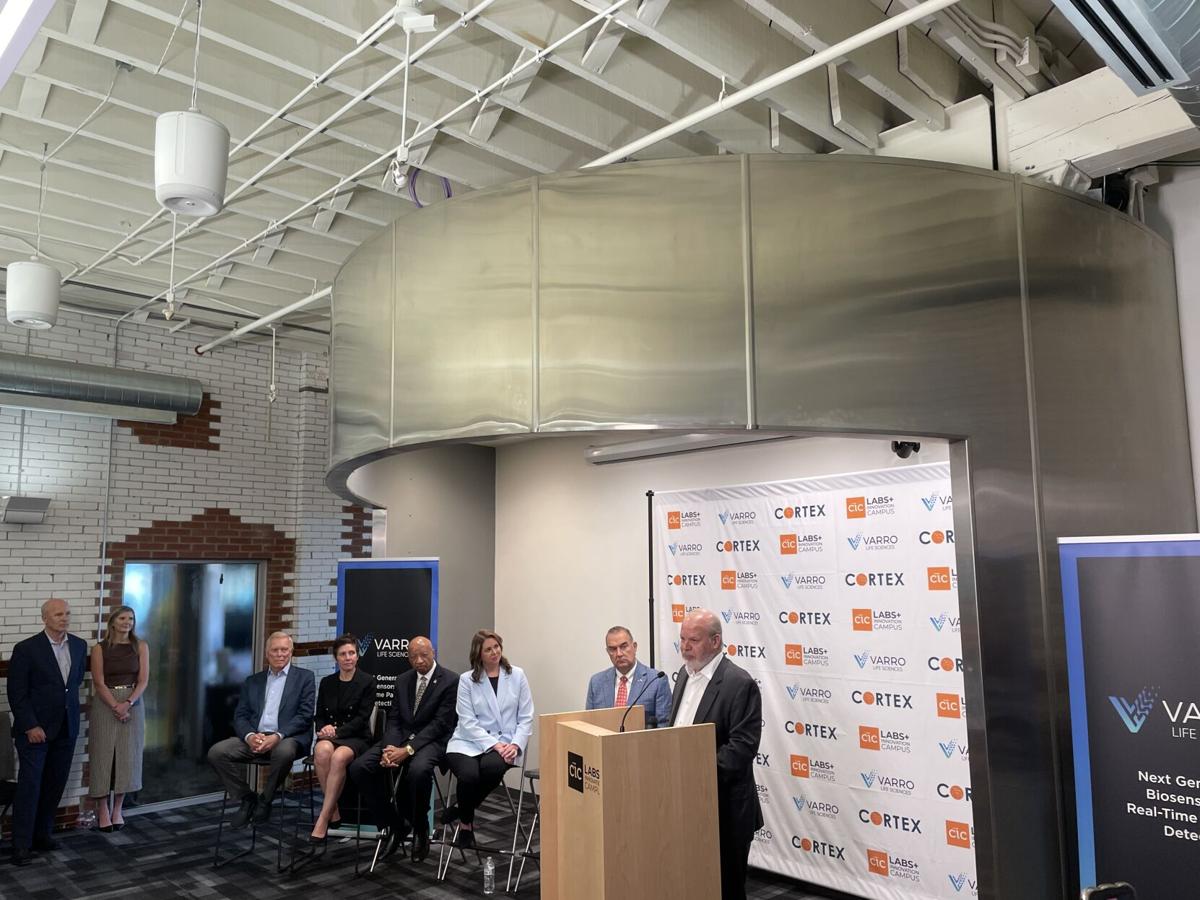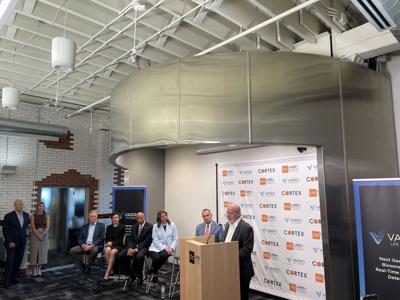ST. LOUIS вАФ Varro Life Sciences, a biotech company developing sensors that can detect airborne germs that cause flu and COVID-19, is opening its headquarters and research labs in the Cortex Innovation District, with plans to hire 30 scientists and lab workers over the coming months.
Previously based out of New York, the move to „о–¬–”∞…‘≠іі made sense for the five-year-old company: it is built on technology created by Washington University researchers, including John Cirrito, a neurology professor who helped develop the biosensor. His brother, Tom Cirrito, is CEO of Varro and has spent much of his career building biotech companies out of New York.
During a ceremonial ribbon-cutting Thursday that drew Missouri Gov. Mike Kehoe, „о–¬–”∞…‘≠іі Mayor Cara Spencer and Washington University Chancellor Andrew Martin, Tom Cirrito said the technology can quickly be customized to detect more than the common pathogens of today. It also can be used to identify new viruses or bacteria, which could be crucial during the next pandemic.
People are also reading…
вАЬItвАЩs going to change everything we do when we think about how to diagnose and treat patients with infectious diseases,вАЭ Cirrito said. вАЬWe can create and get new devices out in the field in a matter of weeks, literally bending the curve and getting in front of whatever it is.вАЭ
State and local leaders hailed VarroвАЩs move here as a solid win for the regionвАЩs research and innovation ecosystem, particularly the life science hub in the Central West End Cortex district. Kehoe called it an вАЬexciting dayвАЭ for „о–¬–”∞…‘≠іі and Missouri, crediting the life sciences ecosystem that Cortex and Washington University have fostered in the area.
Tom Cirrito described VarroвАЩs biosensor technology as a вАЬsemiconductor that essentially links the biological and electrical worldsвАЭ that can be quickly configured to identify airborne viruses and bacteria in minutes, via breath-based tests for individuals and indoor air monitoring systems.
Varro plans to begin clinical testing during next yearвАЩs flu season for Food and Drug Administration approval for its individual breathalyzer tests. Its other device, which monitors indoor air for pathogens, does not require FDA approval and could be commercially available in 18 to 24 months, Cirrito said in an interview from VarroвАЩs new lab and manufacturing space at 20 South Sarah Street. The air monitoring systems could be used in hospitals or pharmacies or at agricultural facilities to detect diseases such as bird flu.
The company already has landed big investments, including one last October, when . That investment did not take an equity stake in the company, but it did have a caveat: Varro needed to provide its technology publicly via open source platforms.
While that arrangement is somewhat common in computer software, it is virtually unprecedented in the medical device field where patents are used to fiercely guard trade secrets. Cirrito, however, has signed a pledge to not sue over the platform techвАЩs patents, and he said the open-source arrangement made sense for such a powerful technology. Other companies, he said, can help Varro identify new uses for the biosensors, and the upside for Varro is it can pivot to quickly serve new markets with competitive advantages in its manufacturing expertise and research and development.
вАЬYou understand how you could use our technology for your idea, and when it comes time to get the actual biosensor itself, weвАЩre making it a no-brainer,вАЭ Cirrito said. вАЬYouвАЩre going to come back, youвАЩre going to buy our biosensor.вАЭ
Former „о–¬–”∞…‘≠іі Congressman Dick Gephardt, now a Washington lobbyist who advises Varro, made an appearance for ThursdayвАЩs announcement. Varro has the potential to become a transformational company, he said.
вАЬThis company will be one of the most important companies in „о–¬–”∞…‘≠іі, in Missouri, in America and in the world,вАЭ Gephardt said.












